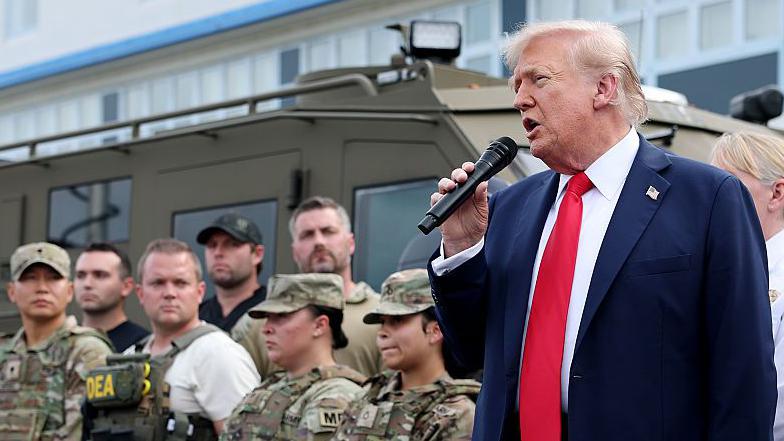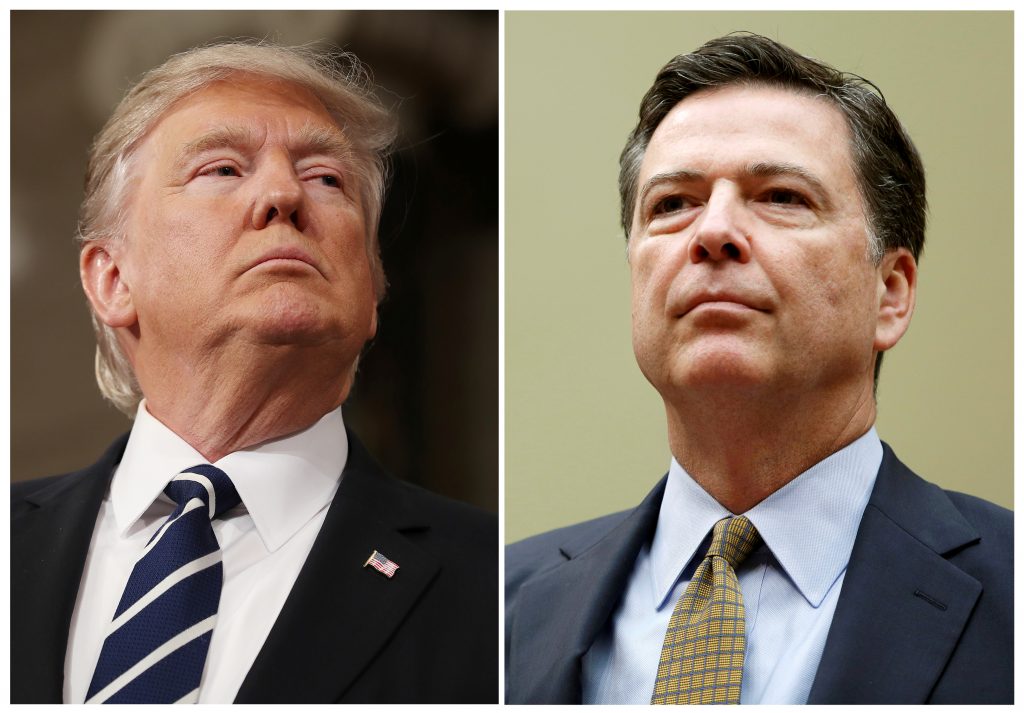Inter-Agency Operation to Address Organized Crime and Advance Sustainable Development in Queens, New York
Executive Summary
A coordinated law enforcement operation is underway in Queens, New York, to dismantle transnational criminal organizations whose activities are severely undermining community safety and progress toward several Sustainable Development Goals (SDGs). The Federal Bureau of Investigation (FBI), in collaboration with the New York City Police Department (NYPD), is targeting gangs responsible for a range of illicit activities along Roosevelt Avenue. This report details the scope of the problem, the strategic response, and the direct implications for SDG 16 (Peace, Justice and Strong Institutions), SDG 5 (Gender Equality), SDG 8 (Decent Work and Economic Growth), and SDG 11 (Sustainable Cities and Communities).
Scope of Criminal Activity and Impact on Sustainable Development Goals
Violations of Peace, Justice, and Community Safety (SDG 16 & SDG 11)
The criminal enterprises operating in the area present a direct challenge to the establishment of peaceful, just, and inclusive societies as outlined in SDG 16. The activities of groups including the 18th Street gang, Asian gangs, and others have created an environment of instability and violence, directly contravening Target 16.1 (reduce all forms of violence). The scope of their operations includes:
- Armed robbery and violent assaults
- Narcotics and weapons trafficking
- Human trafficking and illegal prostitution
- Systematic violence to maintain territorial control
These actions constitute a severe form of organized crime, which Target 16.4 aims to combat. Furthermore, the resulting degradation of the neighborhood—characterized by unsanitary conditions, illegal vendors, and a pervasive sense of insecurity—impedes progress toward SDG 11, which seeks to create safe, resilient, and sustainable urban environments.
Human Trafficking and Gender Equality Concerns (SDG 5 & SDG 8)
A significant component of the criminal activity involves the exploitation of individuals, particularly women, through sex trafficking and forced prostitution. This practice is a gross violation of human rights and a direct affront to SDG 5, specifically Target 5.2, which calls for the elimination of all forms of violence against women and girls, including trafficking and sexual exploitation. Law enforcement officials believe many women working in the area are victims of human trafficking, a form of modern slavery that SDG 8, Target 8.7, is dedicated to eradicating. The recent indictment of an individual for sex trafficking charges involving victims from Mexico highlights the transnational nature of this exploitation.
Law Enforcement Strategy and Institutional Strengthening
Federal and Local Collaboration for Effective Justice (SDG 16)
In line with SDG 16.a, which encourages the strengthening of national institutions to combat crime, the FBI has initiated a robust, multi-faceted strategy in partnership with the NYPD. Christopher Raia, the FBI’s assistant director in charge of the New York office, has designated the Roosevelt Avenue corridor a top priority. The strategy focuses on long-term disruption of criminal hierarchies rather than temporary suppression. This involves targeting the leadership of the gangs to “cut off the head of the snake,” ensuring a more lasting impact on organized crime in the community.
Operational Objectives and Legal Framework
The federal approach is designed to secure meaningful justice and deter future criminal activity through a comprehensive legal framework. Key operational objectives include:
- Intelligence Gathering and Infiltration: Deploying multiple squads to patrol the area and gather intelligence on gang operations.
- Complex, Long-Term Investigations: Building robust cases that target the entire criminal enterprise, not just low-level offenders.
- Utilization of Federal Statutes: Applying federal laws related to racketeering, human trafficking, and narcotics, which carry significantly stiffer penalties and reduce the likelihood of pretrial release.
- Dismantling Criminal Networks: Executing large-scale takedowns of multiple gang members simultaneously to disrupt and dismantle their operational capacity.
Community Response and Stakeholder Engagement
Local Advocacy for Safe and Inclusive Communities
Local leaders and community members have been instrumental in advocating for decisive action. Former State Senator Hiram Monserrate, through the Restore Roosevelt Avenue Coalition, has organized weekly protests to raise awareness and demand institutional response. Representative Grace Meng has also advocated for increased federal resources to combat violent crime and human trafficking. This civic engagement underscores the community’s demand for safety, justice, and the restoration of their neighborhood, aligning with the participatory principles of the SDG framework.
Desired Outcomes for Sustainable Urban Development
The overarching goal of the inter-agency operation and community advocacy is to restore safety and stability to the Roosevelt Avenue area. Success will be measured not only by arrests but by the re-establishment of a community that is safe, inclusive, and sustainable (SDG 11), where the rule of law is respected (SDG 16), and where the human rights and dignity of all individuals, especially women and vulnerable populations, are protected (SDG 5, SDG 8).
Analysis of Sustainable Development Goals in the Article
1. Which SDGs are addressed or connected to the issues highlighted in the article?
-
SDG 16: Peace, Justice and Strong Institutions
- The article’s core focus is on crime, violence, and the efforts of law enforcement (FBI, NYPD) to dismantle transnational gangs and restore the rule of law. It discusses organized crime, violence, weapons trafficking, and the justice system’s response, which are central themes of SDG 16.
-
SDG 5: Gender Equality
- The article extensively covers issues of illegal prostitution, sex trafficking, and violence against women. It mentions women being forced into prostitution and beaten if they fail to meet quotas. These issues directly relate to the SDG 5 goal of eliminating all forms of violence against women and girls, including trafficking and sexual exploitation.
-
SDG 8: Decent Work and Economic Growth
- The discussion of human trafficking and victims being forced into prostitution is a form of modern slavery and forced labor, which SDG 8 aims to eradicate. The article highlights the exploitation of individuals for economic gain by criminal gangs.
-
SDG 11: Sustainable Cities and Communities
- The article describes the neighborhood as a “crime-infested hot spot” that is “scarred by trash and unsanitary conditions.” This points to a lack of safe, inclusive, and sustainable urban environments. The efforts to “clean up that community” and restore safety align with the goals of SDG 11.
2. What specific targets under those SDGs can be identified based on the article’s content?
-
Under SDG 16: Peace, Justice and Strong Institutions
- Target 16.1: Significantly reduce all forms of violence and related death rates everywhere. The article mentions “brutal beatings and stabbings,” a man being “stabbed multiple times,” and a 16-year-old girl being fatally mowed down, highlighting the presence of severe violence that law enforcement aims to reduce.
- Target 16.2: End abuse, exploitation, trafficking and all forms of violence against and torture of children. The focus on human trafficking and the death of a 16-year-old girl connect directly to this target.
- Target 16.4: Significantly reduce illicit financial and arms flows… and combat all forms of organized crime. The article explicitly details the FBI’s mission to “smash and dismantle the transnational gangs” involved in “narcotics and weapons trafficking” and other forms of organized crime.
-
Under SDG 5: Gender Equality
- Target 5.2: Eliminate all forms of violence against all women and girls in the public and private spheres, including trafficking and sexual and other types of exploitation. The article details “illegal prostitution,” “sex trafficking,” and a specific case where a woman “forced the victim into prostitution… and beat her when she failed to meet quotas.”
-
Under SDG 8: Decent Work and Economic Growth
- Target 8.7: Take immediate and effective measures to eradicate forced labour, end modern slavery and human trafficking. The article’s discussion of women being brought from other countries and “forced into prostitution” is a clear example of modern slavery and human trafficking that authorities are trying to end.
-
Under SDG 11: Sustainable Cities and Communities
- Target 11.6: Reduce the adverse per capita environmental impact of cities, including by paying special attention to… municipal and other waste management. The description of the area being “scarred by trash and unsanitary conditions” points to a failure in waste management, which is a key aspect of this target.
- Target 11.7: Provide universal access to safe, inclusive and accessible, green and public spaces. The article portrays the opposite of a safe public space, describing it as a “crime-infested hot spot” and a “red-light district.” The goal of law enforcement and community leaders is to restore safety and make the area accessible for residents without fear.
3. Are there any indicators mentioned or implied in the article that can be used to measure progress towards the identified targets?
Yes, the article mentions several quantitative and qualitative indicators that can measure progress:
-
Indicators for Crime and Justice (SDG 16)
- Number of arrests and prosecutions: The article states that “eight members of the 18th Street gang were arrested” and the “NYPD… arrested 350 people so far this year for prostitution-related offenses.” Tracking these numbers over time would indicate the level of law enforcement activity.
- Severity of sentences: The article implies that a shift to federal prosecutions, which “carry stiffer sentences and keep offenders behind bars longer,” is a measure of more effective justice.
- Number of violent incidents: Reports of stabbings, beatings, and homicides serve as direct indicators of the level of violence (Target 16.1). A reduction in these incidents would show progress.
-
Indicators for Trafficking and Exploitation (SDG 5 & 8)
- Number of human trafficking cases identified and prosecuted: The article mentions a specific indictment for “sex trafficking charges tied to at least two women.” An increase in successful prosecutions would indicate progress in combating trafficking.
- Prevalence of open prostitution: The observation that “at least 30 women appearing to solicit sex on one block” and the existence of “well-known brothels openly operating” are qualitative indicators. A reduction in this visible activity would signify progress.
-
Indicators for Community Safety and Environment (SDG 11)
- Level of public protest and community engagement: The fact that “concerned residents hold weekly protests” indicates a high level of public dissatisfaction with safety. A decrease in such protests could imply an improvement in conditions.
- Visible cleanliness of the area: The description of the neighborhood being “scarred by trash and unsanitary conditions” is a qualitative indicator. Visual assessments of cleanliness can measure progress towards Target 11.6.
4. Summary Table of SDGs, Targets, and Indicators
| SDGs | Targets | Indicators Identified in the Article |
|---|---|---|
| SDG 16: Peace, Justice and Strong Institutions |
16.1: Reduce all forms of violence. 16.2: End abuse, exploitation, and trafficking. 16.4: Combat all forms of organized crime. |
|
| SDG 5: Gender Equality | 5.2: Eliminate all forms of violence against all women and girls, including trafficking and sexual exploitation. |
|
| SDG 8: Decent Work and Economic Growth | 8.7: Eradicate forced labour, end modern slavery and human trafficking. |
|
| SDG 11: Sustainable Cities and Communities |
11.6: Reduce the adverse per capita environmental impact of cities (waste management). 11.7: Provide universal access to safe and inclusive public spaces. |
|
Source: foxnews.com






